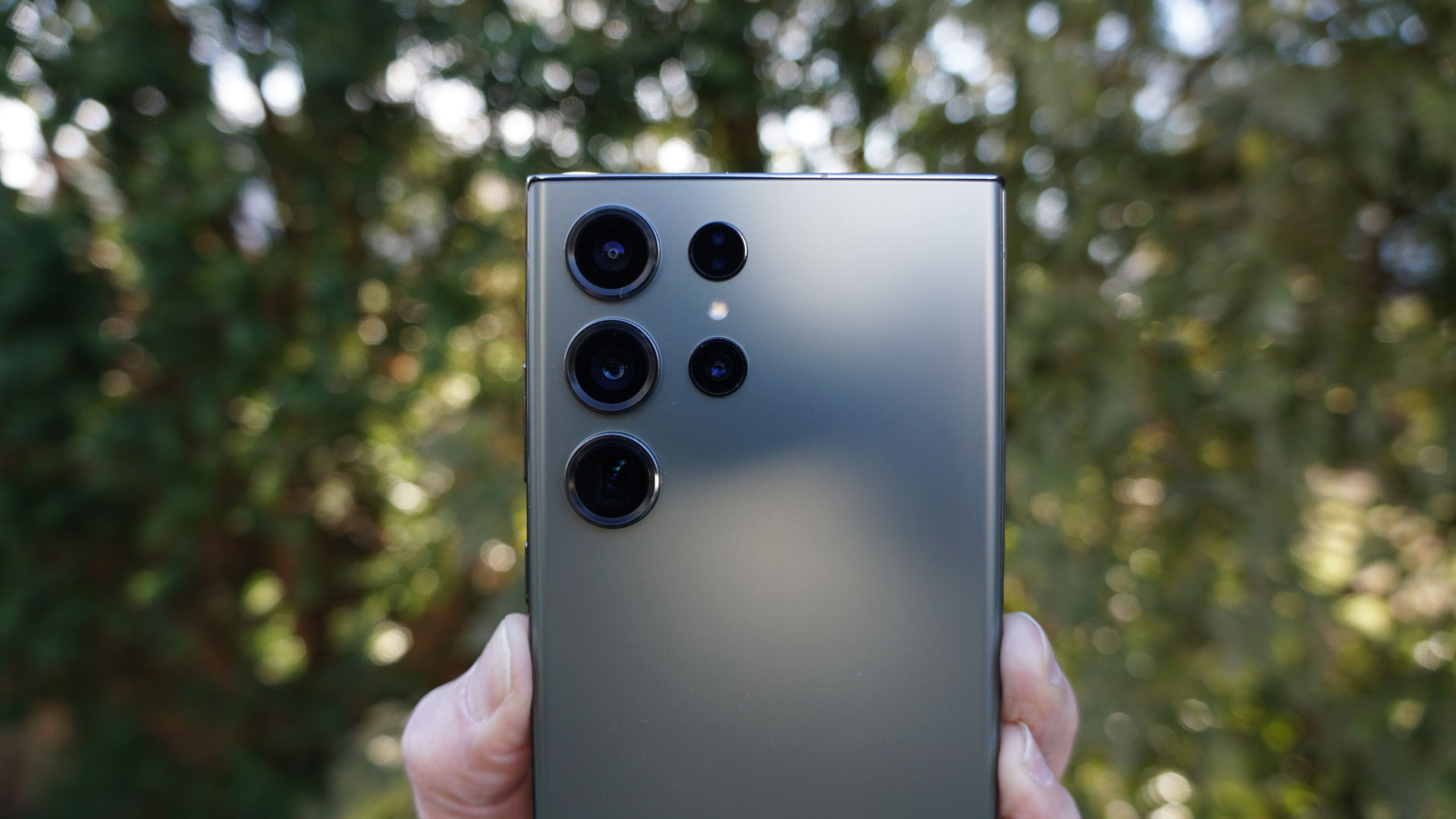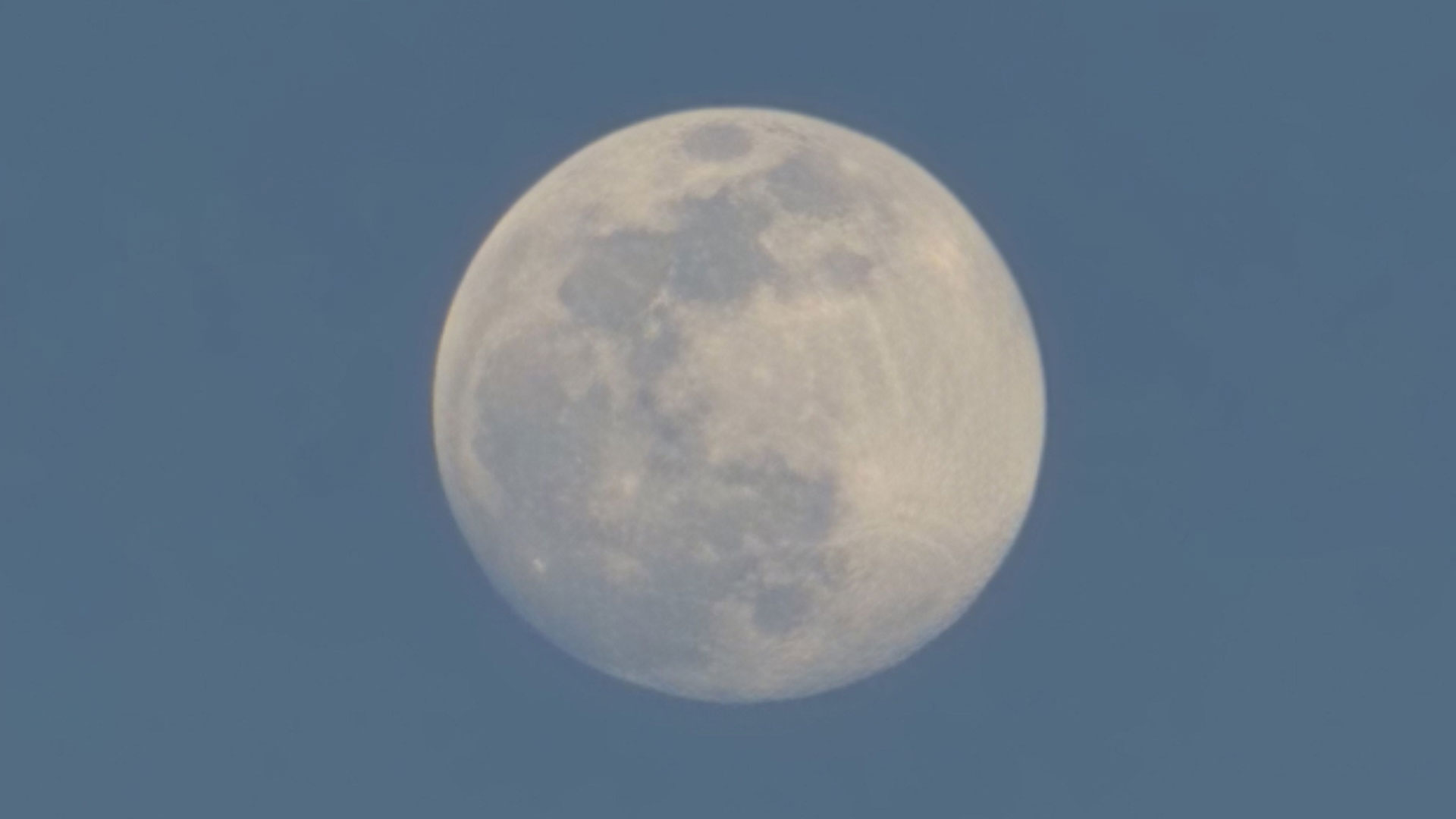Samsung's Galaxy S23 moon photo mess reminds us that, thanks to AI, nothing is real
Divorced from reality

Samsung has never lied to us about its Samsung Galaxy S23 Ultra's moon photography capabilities. The powerful 6.8-inch Android handset expertly delivers images of the moon.
It does not give you a picture of the real moon.
There. See how that clears things up? Don't you feel better now?
Right. No, you don't.
Samsung's blog post detailing exactly, or almost exactly, how its Space Zoom, in tandem with AI, image processing, screen brightness reduction, and the Detail Enhancement Engine, all of which feed into Samsung's Scene Optimizer, makes images of the moon reveals, perhaps for the first time, that Samsung was never letting us simply take photos of the moon.
If you need further proof, here's the money sentence, buried at the bottom of the illuminating post:
"Samsung continues to improve Scene Optimizer to reduce any potential confusion that may occur between the act of taking a picture of the real moon and an image of the moon."
Sign up for breaking news, reviews, opinion, top tech deals, and more.
Your AI partners
What we have here is very much like the partnership that exists between humans and ChatGPT, Midjourney, or DALL-E. We ask those generative AIs to give us images and text that fulfill our prompts, and they each dutifully do so, some more effectively than others.
When you point your Samsung Galaxy S23 Ultra, Galaxy S23 Plus, or even the Galaxy S23 at the moon, you're engaging Samsung's AI (the Detail Enhancement engine) for the task of creating an image of the moon.
It's a big job that's full of lots of twists and turns as the system uses what it knows of the moon we've photographed countless times from Earth (and with some really excellent cameras and big lenses) and in some fashion – it's not clear how – combines that information with the garbage, noise-filled optical image the Galaxy S23 Ultra's best 10X telephoto camera can see.
After that, it's off to the races.


As you can see above, it's still quite easy to see the difference between a moon image produced by the Samsung Galaxy S23 Ultra, and a moon photo taken with a real camera and telephoto lens.
Photos vs images
What we now know is that the final result is not a patchwork of previously captured moon photos spliced together like a ransom note. No, this is something new and different.
It's a brand-new image of the moon created by Samsung's AI master, otherwise known as Scene Optimizer. If you turn that off, you're back to the blurry, useless photo of the real moon that you would probably never share.
Samsung's efforts are part of a larger truth. We now live in a world where the unseen hand of AI is influencing all of our digital experiences.
Nothing is pure, and increasingly a lot isn't real.
Everything we write is being munged by AI, whether you have an AI-powered grammar and spellchecker, or you're letting AI rewrite some of your sentences. Your emails are completed by Google's AI (and with generative AI coming to all the Workspace apps, that will soon be even more the case).
Every photo we take on all the major flagship phones, including your beloved iPhone 14 Pro and Google Pixel 7 is fondled first by AI. We never get just one image or one pixel. The image processor applies a neural network to your most mundane photos, and remakes them so they're uniformly wonderful.
We watch television on the best TVs pre-processed by AI so it looks better. I have no idea what movies and TV might look like without it. To get pure, unadulterated entertainment, I probably have to go to the theater.

You might think Samsung lied to us. It promised exceptional Space Zoom moon images and we got... exceptional Space Zoom moon images.
Yes, they were also impossible. You can't suddenly make an optical lens pull in more real information than it can see. So Samsung switched from talking about photos of the real moon to images of the moon.
Can we stop?
Instead of railing at Samsung, it's time to recognize how AI is altering our worldview, and to decide if that's the world we really want.
Maybe we choose to turn off scene optimization, and buy one of the best mirrorless cameras and a huge lens so that we can capture real photos of a real moon; maybe we turn off Grammarly and Gmail smart compose and AI-assisted spell check, and we turn off image processing on all platforms and for all photos.
The world gets a little more real, but maybe a lot duller.
I bet we make our peace with that invisible AI hand, and eventually forget it existed in the first place. Who cares what's real when it all looks so good?

A 38-year industry veteran and award-winning journalist, Lance has covered technology since PCs were the size of suitcases and “on line” meant “waiting.” He’s a former Lifewire Editor-in-Chief, Mashable Editor-in-Chief, and, before that, Editor in Chief of PCMag.com and Senior Vice President of Content for Ziff Davis, Inc. He also wrote a popular, weekly tech column for Medium called The Upgrade.
Lance Ulanoff makes frequent appearances on national, international, and local news programs including Live with Kelly and Mark, the Today Show, Good Morning America, CNBC, CNN, and the BBC.